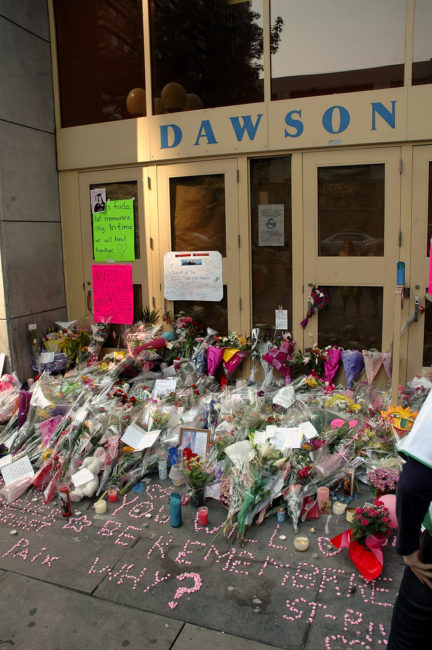
Researchers are developing new strategies to counter shootings at schools and other public places, and they’re not what you might expect. The Sitka School Board at it’s regular meeting this week heard a presentation on the ALICE program, which represents a radical departure for personal safety in life-threatening situations.
A school shooting is difficult to contemplate, much less talk about, but an important component of ALICE, which stands for Alert, Lockdown, Inform, Counter, and Evacuate is just that — talking about this horrific scenario and knowing how to respond.
Blatchley Middle School principal Ben White attended a two-day training in Juneau to get his ALICE certification, along with Baranof principal Mark Lee, EMS captain Rob Janik, and Sitka police officers Brad Wheeler and Walter Smith.
White told the board that law enforcement strategists had concluded that the lockdown should not be the universal response to an active shooter. In fact, just the opposite may be safer.
“One of the things they talked a lot about was empowering staff and students to make a decision for themselves in the moment.”
In other words, escape may be the better option.
White said schools often rely on procedures, which look good on paper, but may be counter-productive in the case of an active shooter situation. He said ALICE trainers illustrated their point with something we’re all familiar with: The fire drill.
“If there is a fire in the school, everyone knows what to do. But if you go to the fire exit, and the fire is in the fire exit, you don’t go out the fire exit, you turn and go out another fire exit. That’s kind of the essence of ALICE program: Depending on where an active shooter is in the building, that will influence your what your decision is, and how you go about dealing with that.”
White also reported that ALICE discourages districts from adopting procedures that can be confusing. He said districts often approach their policies with an eye to protecting themselves from liability, but every single school where a shooting has occurred has been sued. So ALICE, he said, focuses on saving lives.
“One of the big things they talk about in the training is real time information. Whatever plan a school has, it shouldn’t be in code words. If there’s a gunman in the building, you should get on the intercom and say, We have a person with a gun in the lunch room. Tell everybody where that person is. That also serves a dual role of alerting the aggressor that you know where he or she is, and you’re also informing the staff so they can make their real time decision as to what is best for them. For a given classroom that may mean diving out a window. For another it may be locking themselves in the classroom.”
White said he was surprised by the hands-on nature of the training. He went expecting lectures and discussions, but instead found himself role-playing as a shooter with training weapons.
Shooting something and hitting it is harder than it looks, especially when the target is moving. White’s instructor provided him with the most vivid demonstration possible.
“He gave me two guns with 16 shots each. 32 shots. And we’re in a room not as big as this library. And I shot at everybody running around the room and hit one lady in the hand. And missed the other 31 shots.”
White said it really wasn’t a matter of marksmanship. The instructor gave a tactically-trained police officer the same opportunity in a room the size of an office with 20 people. He hit only 5.
White said that shooters at institutions which went into lockdown — like Virginia Tech, Columbine, and Newtown — had far higher rates: 80-percent of their targets hit (often at very close range), fifty-percent of whom died.
The school board took no action on adopting the ALICE program at this meeting. Superintendent Mary Wegner explained that this recent training was just the first step toward adopting district policy, and updating its partnership with police, fire and Mt. Edgecumbe High School. Formal adoption would probably happen later this spring, with implementation at the start of school next fall.
School board president Lon Garrison favored moving ahead on the program.
“It’s something that has worried me for several years. It always seems like it’s one of those things that until a crisis comes up, you don’t really think about it. But this can happen absolutely anywhere.”
